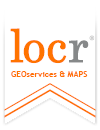In the US, spending for healthcare advertising has almost doubled over the past two decades, reports Reuters. New facilities and providers are emerging to bridge the gap between local family doctors and expensive, centralized hospitals.
What does that mean for marketers to the healthcare sector?
In this rapidly changing health-care market, providers must create marketing messages that engage, educate and retain patients. Healthcare marketers are working hard to educate patients about the benefits of these new centers.
“Healthcare marketers struggle to gain traction in a market that is rapidly changing,” says Randy Hardy, leader of locr’s business development for the health-care market. “But amidst these changes, one thing remains true: to succeed, health-care providers must get patients to the right location for the right care at the right time. To achieve that goal — and advance their health-care organization’s position — more and more health-care marketers are choosing geomarketing services from locr.”
The Value of Location in Healthcare Marketing
As a patient, can you think of anything more reassuring than knowing exactly where to go in an emergency and how long it actually takes you to get there? Especially for elderly people or people with chronic diseases, these insights can be of real value when time matters.
Emergency centers, practices or medical specialists can send regular informative mail to remind households of their yearly check-up, inform them about healthcare questions or vaccination.
Here are three tips for your next campaign!
3 Tips for a successful healthcare campaign
1. Patient Persona
The first step of every campaign planning process is to define your audience – in this case your patients. Here are four key questions to address when building your patient persona:
- Who are they?
- How old are they?
- Why are they choosing my practice?
- where do your customers live? (a vital point for healthcare practices!)
“One of the most common reasons consumers cite for using an urgent care center is its proximity to their home”, according to Alan Ayers, of the Board of Directors for the Urgent Care Association of America.
2. Analyze your contact data base
Based on your patient persona you can analyze your customer data base and draw a circle around those contacts that match your patient persona! This will not only save you a lot of money on printing and postage but also increase your response rates and return on investment.
3. Multi-Channel Touchpoints
Healthcare consumers today have more choices for their healthcare. They also have more accountability for how much that care costs. In response to this trend, healthcare providers have overhauled their marketing messages and are now creating campaigns that help to engage, educate, and retain patients.



